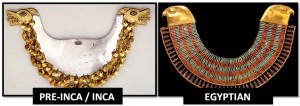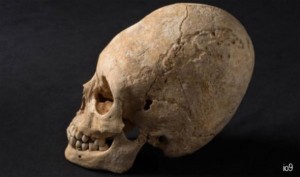The Incans and the Egyptians: Connected through time and space?
HAPPY NEW YEAR FROM THE MUSEUM OF MYSTERIES!
And now for some more mysteries…
From gold funeral masks, nearly identical religions, obelisks with hieroglyphics, and so much more, the astounding similarities of the Incan/pre-Incan and Ancient Egyptian cultures is not to be denied. How did two cultures separated in antiquity by a vast ocean co-evolve in so many inexplicable ways? The following article delves into a huge list of coincidences that will no doubt stun you while also convincing you that there simply had to be some sort of connection between these cultures. Was there a seafaring global mother culture such as Atlantis that informed the customs, architecture, and religions of both the Incans and the Egyptians?
The Mystery Of Twin Cultures On Opposite Sides Of The Atlantic
“The ancient Egyptians (in Africa) and the ancient pre-Incas/Incas (in South America) evolved on opposite sides of the globe and were never in contact; yet both cultures mysteriously possessed the same strikingly identical body of ancient art, architecture, symbolism, mythology and religion. The Victorian-era scholars, faced with this enigma, concluded that both cultures must have been children of the same Golden Age parent civilization, “Atlantis.” Today, Egyptian/Inca parallels are not only being ignored by American and Western scholars, they’re being suppressed.
Many baffling and unsolved similarities link the ancient Egyptians and the ancient pre-Incas/Incas – even though both cultures evolved on opposite sides of the planet, separated by oceans.
Victorian-era scholars, faced with this enigma, believed both cultures inherited the same high wisdom from the same exceedingly older source—a shared “parent civilization” now lost to history. For the Victorians this common parent hypothesis explained the parallels well. These Victorian scholars called this common parent “Atlantis,” following Plato and the Classical historians…”
For the rest, click here.
Share



